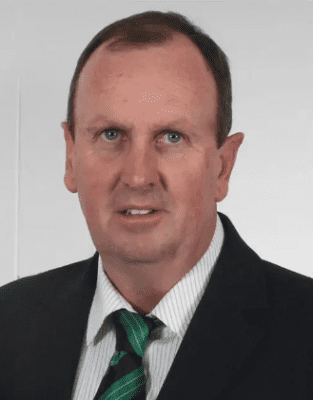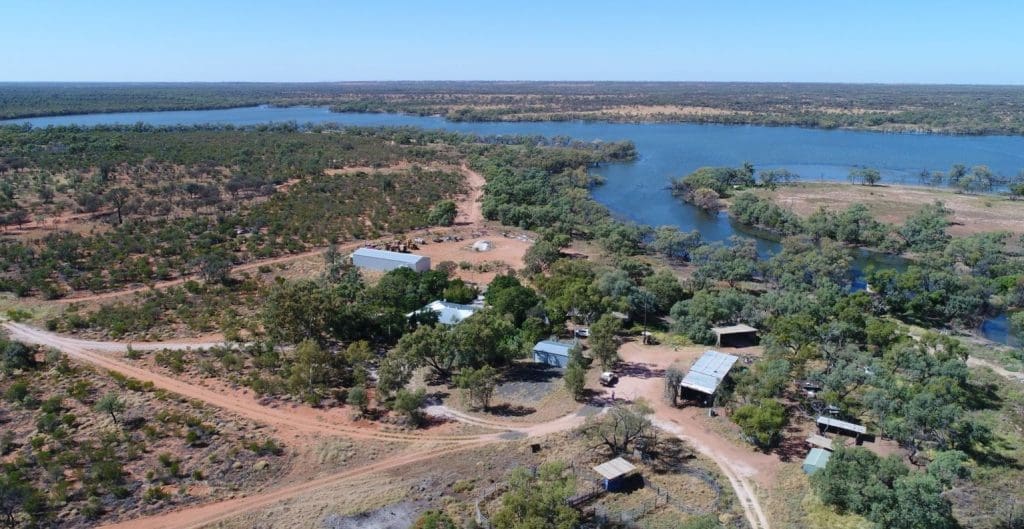THIS week’s property review examines the market in the Western Division of New South Wales where prices have begun to ease after a record two selling seasons.
The region lies west of a line from the Queensland border at Mungindi to Balranald near the Victorian border. It spans 32.5 million hectares, or 42 percent of the state, and includes Broken Hill, Bourke, Cobar, Walgett and Wentworth.
Most of the country is leasehold land used for grazing; however, in recent decades there has been increased development of dryland and irrigated cropping.
Cobar-based David Russell from Nutrien Russell Livestock and Property said property prices have dropped, particularly for those offering carbon projects.
 “Property prices have fallen by 10 to 20 percent after two record years in 2021 and 2022 when around 30 properties were transacted.
“Property prices have fallen by 10 to 20 percent after two record years in 2021 and 2022 when around 30 properties were transacted.
“That ship has now sailed and the market is in unchartered waters as a result of rising interest rates and labour costs.”
Mr Russell said good properties sell at any time of the year, with the strongest inquiry for places that are well-improved with a strong stock record.
“In the past, buyers secured rundown properties and upgraded the infrastructure and fencing. However, that is a costly undertaking today given the current cost of labour and materials.”
He said fencing material previously costing $3000 to $4000/km each is now selling for $6000 to $7000/km.
Mr Russell said properties advertised with a carbon project attract mostly city investors seeking a return on capital without the expense of running a property.
“Conversely, a property I sold last year was offered with a small carbon project and three buyers walked away because they didn’t want to be involved with carbon.”
Mr Russell said the uncertainty surrounding carbon is also testing the market.
“Many western division holdings that undertook large HIR projects after the drought made good money. With the projects now reaching their expiry date and their future hanging in the balance some landholders, older ones in particular, have been prompted to sell up and get out.”
Mr Russell blames carbon groups for failing to explain the situation to potential buyers.
“Important relative information is not being passed on to prospective buyers in a timely manner. As a result, recent sales have been delayed and others have fallen over.”
Mr Russell said unfortunately, carbon can be a disincentive today because it is like having a caveat on a property with the aggregators more or less controlling the country.
When it comes to understanding carbon, Greg Seiler from Nutrien Walsh Hughes Bourke is one of the best-informed agents in the country, after selling numerous properties with carbon and for carbon.
As a result, it comes as no surprise that Mr Seiler has a bucket of qualified carbon buyers with capital who he works with on a daily basis.
He identified three types of people interested in carbon in the western division:
- Corporates who have capital behind them and are ready to invest and execute contracts.
- Those who have heard there is good money to be made in carbon. They don’t have access to capital but are talking to investors trying to put deals together.
- Larger family farm operators seeking expansion who will step into some of these carbon projects if the grazing operation ticks all their boxes.
Mr Seiler said the larger family farm operators are the most nimble because they can transact the quickest.
Mr Seiler said buying a property for carbon is a two-pronged approach.
 “The successful purchasers are those looking at the production of a place, the quality of the grazing country and the operation they can run there.”
“The successful purchasers are those looking at the production of a place, the quality of the grazing country and the operation they can run there.”
“These people understand how they can make money from livestock and use the carbon project as an added income stream to fund some of their purchase,” he explained.
Mr Seiler said people buying a property solely for carbon have trouble transacting.
“The ones who look at carbon alone have trouble valuing the land component or the grazing operation to make a deal happen.”
“Potential purchasers who fail to factor the grazing operation into today’s net present value or discounted cash flow are walking away because they can’t get a return on investment.”
Mr Seiler said times have changed.
“In the early days when the market was immature and people didn’t fully understand these business models, people secured places in the Western Division and locked them up for carbon.”
“The carbon market has evolved and today, people need to consider all the factors and understand what they can achieve in terms of results before putting their hand up and buying a property,” he said.
Mr Seiler said corporate interest in carbon investment is perceived as ’huge’; however, it is not converting to actual sales in the Western Division, with just as many individuals actively competing.
“There are many people trying to jump on the carbon bandwagon and while it is not too late, the big wins are history now. Today, carbon is a business and buyers need to look at both sides of the paper.”
Mr Seiler said the first step is to value the grazing operation and the second is to assess the net present value of the carbon project.
“Previously, carbon was valued and sold to the Australian government. It was an easy process for all involved. Today, there is more market variation with many carbon contracts about to expire and others that are uncontracted.”
Mr Seiler said investors need to determine what their carbon will achieve.
“In the light of inflation and interest rates, investors should conduct a net present value (NVP) calculation on selling now or in the future. This assessment will give investors clarity about the price they should pay (or shouldn’t pay) for a project.”
Sales and prices
Mr Seiler said most of his current listings are due to succession planning, with people looking to retire or move on.
“Over the past 10 years, in the Bourke district, many returned home to take on the family farm. However, that’s no longer the case and as a result, an increased number of properties have hit the market.”
Conversely, Mr Seiler said some people strategically held back properties from the market to maximise capital gains.
“Last year, there was a 22 percent increase in New South Wales grazing values and many people who were tempted to sell hung on for potential further price gains.”
With interest rates and livestock prices at current levels, Mr Seiler believes the rural property market has plateaued.
“Human nature will never let the market slide! If someone has achieved a certain price, the person down the road generally won’t sell for less than what their neighbour or one of their friends did.”
Mr Seiler said there is still strong interest.
“People aren’t climbing over the top of each other like they were last year. There are fewer inspections which converts to smaller numbers in the auction room. Instead of eight to 10 people competing for a property, there are now four to six – which is still very healthy.”
Recent sales
- May 2023 – the adjoining 20,406ha Delta and the 9230ha Yandaroo, 70km and 80km west of Bourke, were snapped up prior to auction for carbon and grazing. The undisclosed buyer is a family farming operation with strong connections to Bourke. There is a large uncontracted HIR project that can produce significant credits in the future.
- March 2023 – 4495ha Rewa, Hermidale, 58km west of Nyngan. The diverse breeding and cropping aggregation was sold prior to auction for around $6m. Rated to run 6000DSE.
- July 2022 – 15,925ha Multagoona, 103km north of Cobar and 145km south of Hillston, exceeded expectations selling at auction for $5.3m ($333/ha) bare. Extensively improved and developed. Set up as a dorper breeding operation running 2000 dorper ewes and 500 nannies.
- July 2022 – 11,577ha Green Creek, 76km north-west of Bourke on the Dowling Track via Ford’s Bridge, sold for $4.6m ($397/ha) – a district record. The country lends itself to a backgrounding operation but had been running dohne sheep with some cattle. Rated to run 3000DSE plus 80 breeding cows (season dependent).
Currently for sale
- 35,446ha Avondale, 88km north-west of Louth and 188km west of Bourke. Well improved and suited to sheep or goat breeding and fattening and cattle. Rated to run 8775DSE. Significant HIR carbon project.
- 8935ha Bundabulla, 50km north of Brewarrina. Highly regarded soft sweet heavy carrying country on the Bokhara River. Rated to run 5539DSE.
- 4450ha Karinya, Hermidale, 35km north-east of Nymagee and 85km south-west of Nyngan. Very well improved mixed grazing and farming operation. Rated to run 3000DSE.
- 3488ha Mangalore, 19km south of Hermidale and 65km south-west of Nyngan. Destocked and a good body of dry feed. Carrying capacity 350 cows and followers and seasonal sheep.
- 8727ha Strathern, 42km from Fords Bridge and 110km north-west of Bourke. Goat and dorper operation harvesting 750-1400 goats a year. Rated to run 1818DSE.
- Adjoining 7204ha Old Ellavale, 49km from Fords Bridge and 117km north-west of Bourke. Operated as a goat and dorper enterprise, estimated to run 200 cows and calves.
- 15,782ha Willawillingbah, 90km north of Brewarrina and 120km west of Walgett. Described as some of the best grazing country the western division has to offer. Suited to sheep or cattle breeding and fattening. Rated to run 11,205DSE.
- 16,458ha Booroomugga Station, 92km north-west of Nyngan and 50km west of Girilambone. Destocked but can run 350 breeding cows and 800-1000 rangeland goats. Development opportunity.
- 9497ha Part Romani, 90km west of Bourke. Conservatively managed and running 3000DSE plus seasonal goats. Significant HIR carbon project.
- 12,603ha Tarwoona Downs, 16km west of Enngonia and 116km north of Bourke. Operating a self-replacing merino flock, Santa Gertrudis cattle breeding herd and goat harvesting. Rated to run 3111DSE.




HAVE YOUR SAY